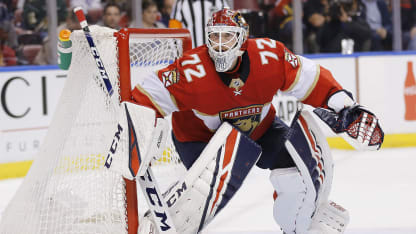Goalies using juggling, online tools to stay sharp during NHL pause
Bobrovsky, Rinne, Hart among those to hone skills while remaining off ice

© Michael Reaves/Getty Images
Bobrovsky, Rinne, Hart among those to hone skills while remaining off ice

© Michael Reaves/Getty Images